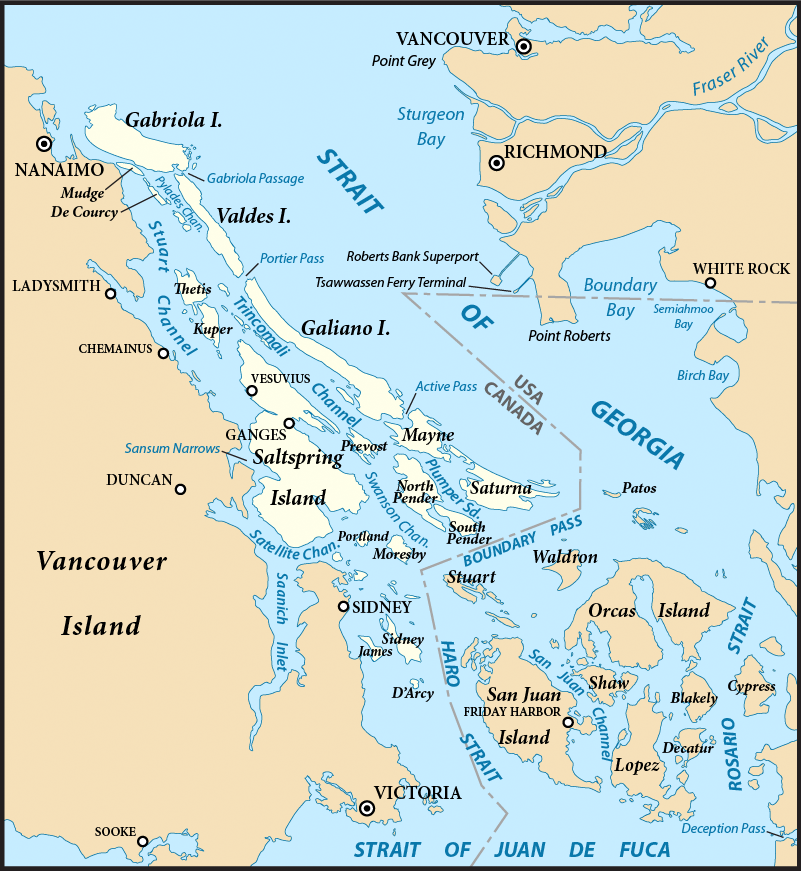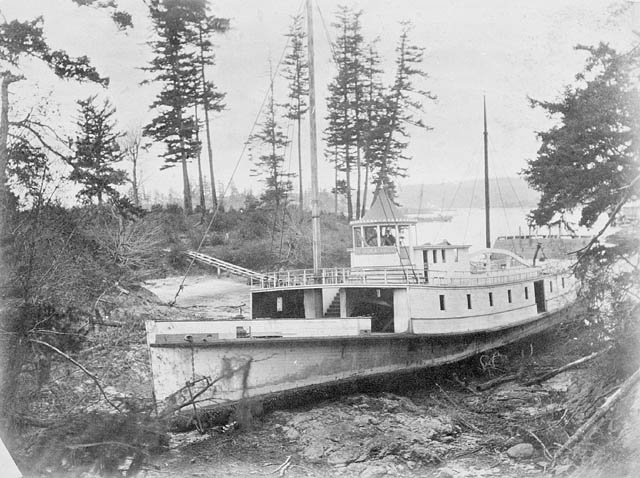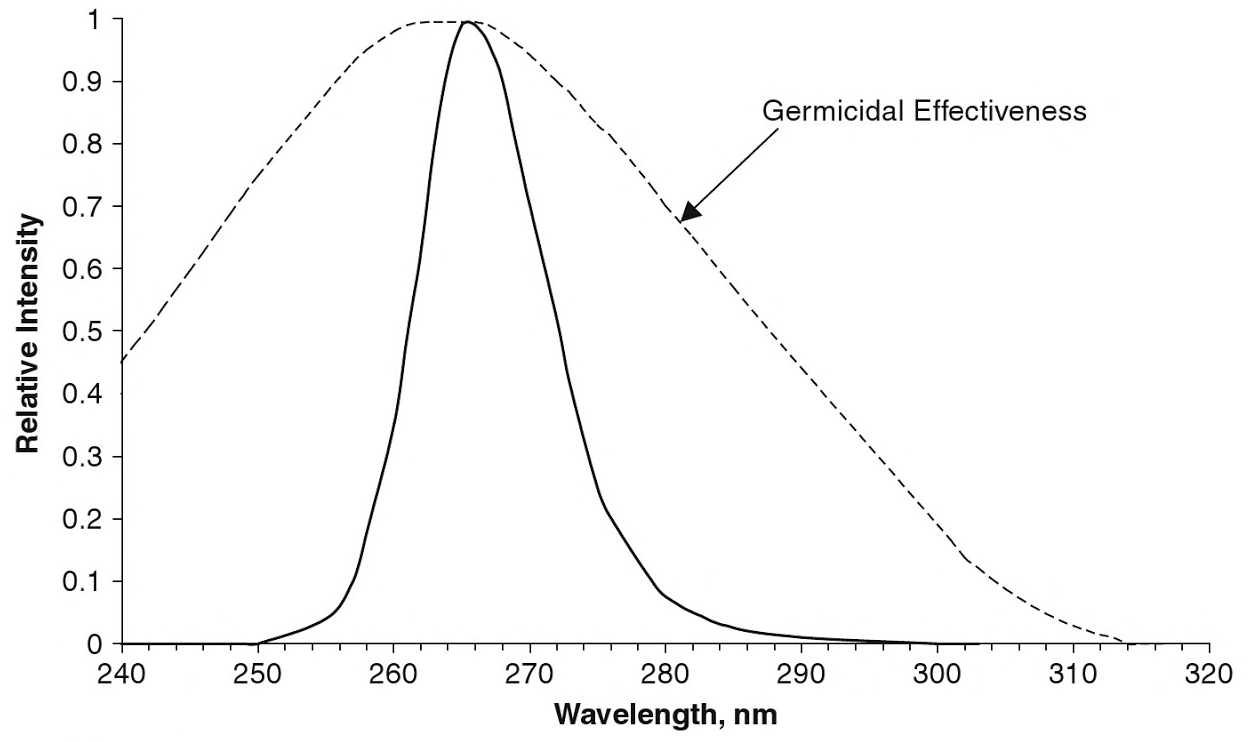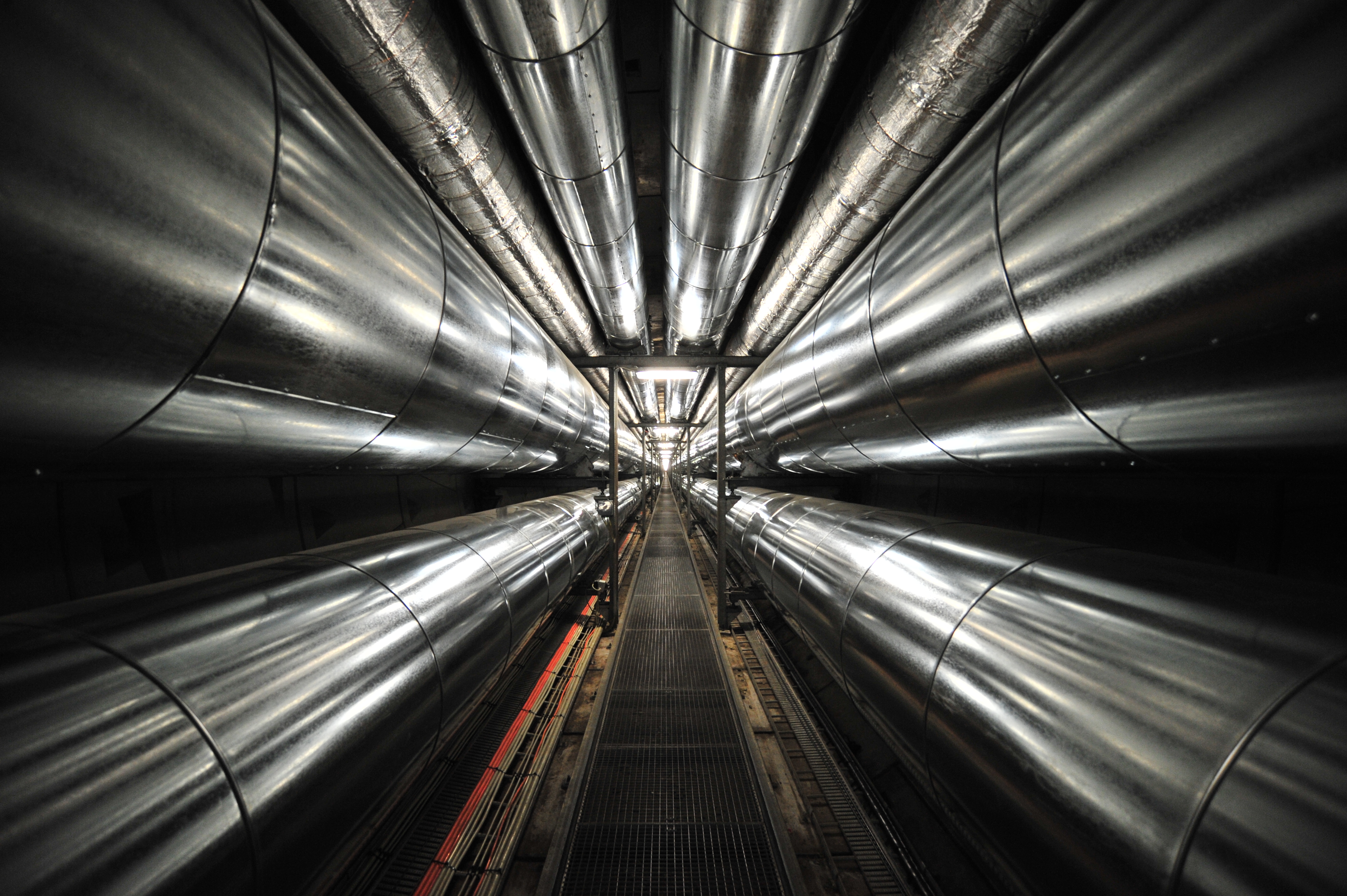|
Kapoor Tunnel
The Kapoor Tunnel is a straight subterranean route which is the main transport of water from the Sooke Lake to the Westshore, City of Victoria, Esquimalt, and the Saanich Peninsula. When it was determined that the Sooke Flowline would no longer meet the region's needs, the decision was made to excavate the tunnel. Prior to construction of the flowline, Arthur Adams, the consultant for the flowline construction, had proposed the Kapoor Tunnel be built. However, that era's technology was not yet up to the task. Construction The tunnel was formed by a miniature tunnel boring machine (TBM), which was built in Vancouver at a cost of $258,000. Excavation was undertaken from both ends with the intention of meeting in the middle. The machine was later abandoned and excavation was carried out manually due to the soft rock clogging the teeth and gears and causing motor burn outs. The contractor quit and the water district completed the task in 1967. On completion, the tunnel was an ... [...More Info...] [...Related Items...] OR: [Wikipedia] [Google] [Baidu] |
Capital Regional District
The Capital Regional District (CRD) is a local government administrative district encompassing the southern tip of Vancouver Island and the southern Gulf Islands in the Canadian province of British Columbia. The CRD is one of several regional districts in British Columbia and had an official population of 415,451 as of the Canada 2021 Census. The CRD encompasses the thirteen municipalities of Greater Victoria and three unincorporated areas: Juan de Fuca Electoral Area on Vancouver Island, Salt Spring Island Electoral Area, and Southern Gulf Islands Electoral Area. The CRD also acts as the local government for most purposes in the Electoral Areas. CRD headquarters is in the City of Victoria, although there are many office and operational facilities throughout the region. The total land area is . The CRD was formed in 1966 as a federation of seven municipalities and five electoral areas to provide coordination of regional issues and local government in rural areas in the Greate ... [...More Info...] [...Related Items...] OR: [Wikipedia] [Google] [Baidu] |
Langford, British Columbia
Langford is a city on southern Vancouver Island in the province of British Columbia, Canada. Langford is one of the 13 component municipalities of Greater Victoria and is within the Capital Regional District. Langford was incorporated in 1992 and has a population of over 40,000 people, the largest municipality in the Western Communities, and third-largest in the Capital Regional District after Saanich and Victoria. Its motto is "Golden in setting, determined in Spirit," containing a reference to the natural beauty of the City of Langford, specifically Goldstream Provincial Park, and a comment on the community's drive to enhance Langford's special character and future. History Langford's history of European settlement dates back to 1851, when Captain Edward Langford established one of the four Hudson's Bay Company farms in the Victoria area. He arrived with his family in 1851 as the first English family to emigrate to the Colony of Vancouver Island. He was the manager of ... [...More Info...] [...Related Items...] OR: [Wikipedia] [Google] [Baidu] |
Victoria, British Columbia
Victoria is the capital city of the Provinces and territories of Canada, Canadian province of British Columbia, on the southern tip of Vancouver Island off Canada's Pacific Ocean, Pacific coast. The city has a population of 91,867, and the Greater Victoria area has a population of 397,237. The city of Victoria is the seventh most densely populated city in Canada with . Victoria is the southernmost major city in Western Canada and is about southwest from British Columbia's largest city of Vancouver on the mainland. The city is about from Seattle by airplane, Harbour Air Seaplanes, seaplane, ferry, or the Clipper Navigation, Victoria Clipper passenger-only ferry, and from Port Angeles, Washington, Port Angeles, Washington (state), Washington, by ferry across the Strait of Juan de Fuca. Named for Queen Victoria, the city is one of the oldest in the Pacific Northwest, with British settlement beginning in 1843. The city has retained a large number of its historic buildings, in ... [...More Info...] [...Related Items...] OR: [Wikipedia] [Google] [Baidu] |
Esquimalt, British Columbia
The Township of Esquimalt () is a municipality at the southern tip of Vancouver Island, in British Columbia, Canada. It is bordered to the east by the provincial capital, Victoria, British Columbia, Victoria, to the south by the Strait of Juan de Fuca, to the west by Esquimalt Harbour and Royal Roads, to the northwest by the New Songhees 1A Indian reserve and the town of View Royal, and to the north by a narrow inlet of water called the Gorge, across which is the district municipality of Saanich, British Columbia, Saanich. It is almost tangential to Esquimalt 1 Indian Reserve near Admirals Road. It is one of the 13 municipalities of Greater Victoria, British Columbia, Greater Victoria and part of the Capital Regional District. Esquimalt had a population of 17,533 in 2021. It covers . It is CFB Esquimalt, home to the Pacific fleet of the Royal Canadian Navy. History The region now known as Esquimalt was settled by First Nations in Canada, First Nations people approximately 400 ... [...More Info...] [...Related Items...] OR: [Wikipedia] [Google] [Baidu] |
Saanich Peninsula
Saanich Peninsula () is located north of Victoria, British Columbia, Canada. It is bounded by Saanich Inlet on the west, Satellite Channel on the north, the small Colburne Passage on the northeast, and Haro Strait on the east. The exact southern boundary of what is referred to as the "Saanich Peninsula" (or simply as "the Peninsula") is somewhat fluid in local parlance. Surrounded by the Salish Sea, Saanich Peninsula is separated from Saltspring Island by Satellite Channel, Piers Island and Coal Island by Colburne Passage, and James Island by Cordova Passage in Haro Strait. Name Its name in the Saanich dialect, ''W̱SÁNEĆ'', means "raised up" (when referring to people, that term means "emerging people"). Geography and climate Lying in the rain shadow of both the Vancouver Island Ranges and the Olympic Mountains, Saanich Peninsula is the driest part of Vancouver Island. The driest recording station in the provincial capital city of Victoria averages only of precipitati ... [...More Info...] [...Related Items...] OR: [Wikipedia] [Google] [Baidu] |
Sooke Flowline
The Sooke Flowline is an abandoned concrete aqueduct (water supply), aqueduct that snakes through the Sooke Hills from Sooke Lake to the Humpback Reservoir, near Mount Wells Regional Park, in British Columbia, Canada. From this reservoir, a buried, riveted steel pressure main transported water to Victoria, British Columbia, Victoria. Between 1994 and 2007, this main was replaced, since it was long past its useful life. The flowline was vital to the continued growth of the city of Victoria, as it provided a reliable water supply. While the flowline remains, Victoria's water supply is now carried via Kapoor Tunnel. Leigh Hodgetts, CRD Waterworks superintendent, reported that the westernmost section of the flowline is still used to carry Sooke's water supply, via a 16-inch interconnecting pipe feeding the Sooke distribution system from Charters Creek to Sooke River Road. Elk Lake (British Columbia), Elk Lake used to be the water supply for Victoria, and when the Colquitz River w ... [...More Info...] [...Related Items...] OR: [Wikipedia] [Google] [Baidu] |
Tunnel Boring Machine
A tunnel boring machine (TBM), also known as a "mole" or a "worm", is a machine used to excavate tunnels. TBMs are an alternative to drilling and blasting methods and "hand mining", allowing more rapid excavation through hard rock, wet or dry soil, or sand (although each requires specialized TBM technologies). TBM-bored tunnel cross-sections extend up to (through June 2023). TBM tunnels are typically circular in cross-section, but may also be square or rectangular, or U- or horseshoe-shaped. Much narrower tunnels are typically bored using trenchless construction methods or horizontal directional drilling rather than by TBMs. TBMs limit disturbance to the surrounding ground and produce a smooth tunnel wall, which reduces the cost of lining the tunnel; it also allows for tunneling in urban areas. Large TBMs are expensive and challenging to construct and transport, fixed costs which become less significant for longer tunnels. Tunneling speeds generally decline as tunnel size in ... [...More Info...] [...Related Items...] OR: [Wikipedia] [Google] [Baidu] |
Shale
Shale is a fine-grained, clastic sedimentary rock formed from mud that is a mix of flakes of Clay mineral, clay minerals (hydrous aluminium phyllosilicates, e.g., Kaolinite, kaolin, aluminium, Al2Silicon, Si2Oxygen, O5(hydroxide, OH)4) and tiny fragments (silt-sized particles) of other minerals, especially quartz and calcite.Blatt, Harvey and Robert J. Tracy (1996) ''Petrology: Igneous, Sedimentary and Metamorphic'', 2nd ed., Freeman, pp. 281–292 Shale is characterized by its tendency to split into thin layers (Lamination (geology), laminae) less than one centimeter in thickness. This property is called ''Fissility (geology), fissility''. Shale is the most common sedimentary rock. The term ''shale'' is sometimes applied more broadly, as essentially a synonym for mudrock, rather than in the narrower sense of clay-rich fissile mudrock. Texture Shale typically exhibits varying degrees of fissility. Because of the parallel orientation of clay mineral flakes in shale, it breaks in ... [...More Info...] [...Related Items...] OR: [Wikipedia] [Google] [Baidu] |
Ultraviolet Germicidal Irradiation
Ultraviolet germicidal irradiation (UVGI) is a disinfection technique employing ultraviolet (UV) light, particularly UV-C (180–280 nm), to kill or inactivate microorganisms. UVGI primarily inactivates microbes by damaging their genetic material, thereby inhibiting their capacity to carry out vital functions. The use of UVGI extends to an array of applications, encompassing food, surface, air, and water disinfection. UVGI devices can inactivate microorganisms including bacteria, viruses, fungi, molds, and other pathogens. Recent studies have substantiated the ability of UV-C light to inactivate SARS-CoV-2, the strain of coronavirus that causes COVID-19. UV-C wavelengths demonstrate varied germicidal efficacy and effects on biological tissue. Many germicidal lamps like low-pressure mercury (LP-Hg) lamps, with peak emissions around 254 nm, contain UV wavelengths that can be hazardous to humans. As a result, UVGI systems have been primarily limited to applications wh ... [...More Info...] [...Related Items...] OR: [Wikipedia] [Google] [Baidu] |
Goldstream Provincial Park
Goldstream Provincial Park is a provincial park in British Columbia, Canada. It is known for the annual fall salmon runs in the Goldstream River, and the large numbers of bald eagles that congregate to feed at that time. The total size of the park is . It is located in the city of Langford. Recreational fishing is only accessible to indigenous cultures, and not local non-indigenous residents. Huge trees stand on the Goldstream River floodplain. Among them are Douglas-fir and western red cedar. They tower over substantial specimens of western hemlock, black cottonwood, bigleaf maple and red alder, which in turn shade western yew. Steep ridges—home to arbutus, western flowering dogwood and lodgepole pine—overlook the floodplain. Many wildflowers are seen during spring and summer. Goldstream Park has several hiking trails, one of which offers access to Mount Finlayson. Goldstream Nature House Goldstream Nature House is a nature centre located in the park and oper ... [...More Info...] [...Related Items...] OR: [Wikipedia] [Google] [Baidu] |
Tunnels In British Columbia
A tunnel is an underground or undersea passageway. It is dug through surrounding soil, earth or rock, or laid under water, and is usually completely enclosed except for the two portals common at each end, though there may be access and ventilation openings at various points along the length. A pipeline differs significantly from a tunnel, though some recent tunnels have used immersed tube construction techniques rather than traditional tunnel boring methods. A tunnel may be for foot or vehicular road traffic, for rail traffic, or for a canal. The central portions of a rapid transit network are usually in the tunnel. Some tunnels are used as sewers or aqueducts to supply water for consumption or for hydroelectric stations. Utility tunnels are used for routing steam, chilled water, electrical power or telecommunication cables, as well as connecting buildings for convenient passage of people and equipment.Salazar, Waneta. ''Tunnels in Civil Engineering''. Delhi, India : Whit ... [...More Info...] [...Related Items...] OR: [Wikipedia] [Google] [Baidu] |








